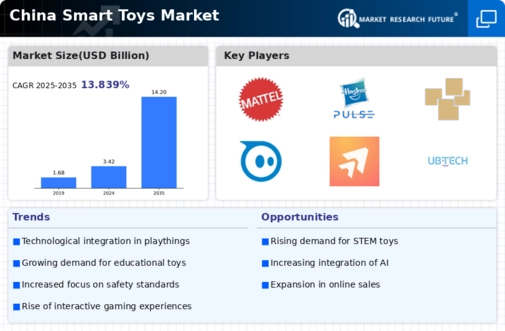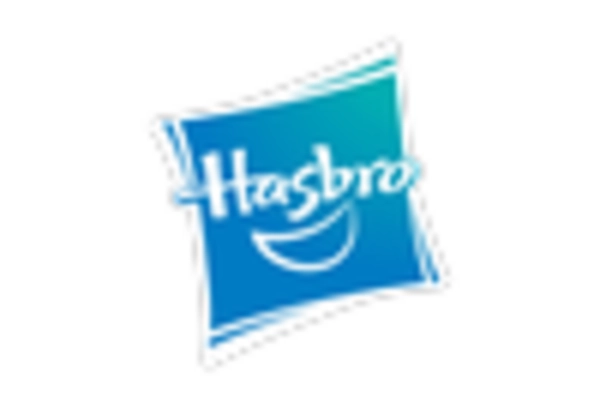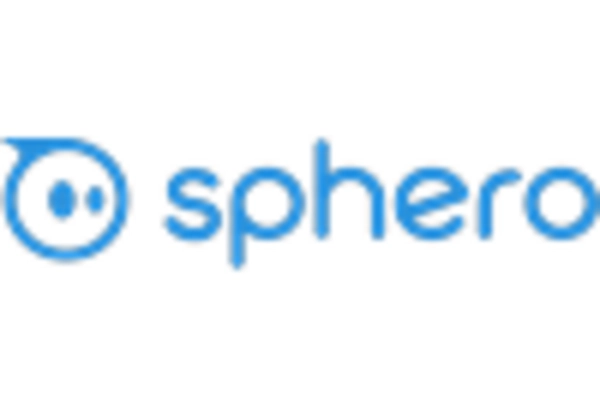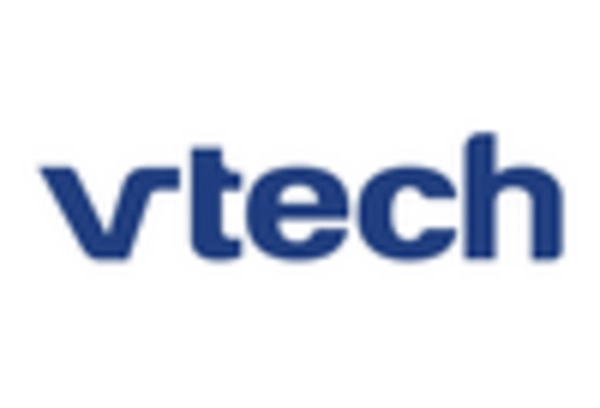Rising Disposable Income
The increasing disposable income among Chinese households appears to be a pivotal driver for the smart toys market. As families experience enhanced financial stability, they are more inclined to invest in innovative and interactive toys that offer educational benefits. Reports indicate that the average disposable income in urban areas has risen by approximately 8% annually, leading to a greater willingness to spend on premium products. This trend suggests that parents are prioritizing quality and engagement in their children's playtime, which aligns with the offerings in the smart toys market. Consequently, manufacturers are likely to focus on developing products that not only entertain but also educate, thereby catering to the evolving preferences of consumers.
Technological Advancements
Technological advancements in the realm of smart toys are significantly influencing the market landscape in China. Innovations such as augmented reality (AR) and artificial intelligence (AI) are being integrated into toy designs, enhancing interactivity and engagement. The smart toys market is witnessing a surge in products that utilize these technologies, appealing to tech-savvy parents and children alike. For instance, toys that adapt to a child's learning pace or provide personalized feedback are becoming increasingly popular. This trend indicates a shift towards more sophisticated play experiences, which could potentially drive market growth. As technology continues to evolve, the smart toys market is expected to expand further, with new features and functionalities being introduced regularly.
Government Support for Innovation
Government support for innovation and technology in China is emerging as a crucial driver for the smart toys market. Initiatives aimed at fostering research and development in the toy industry are likely to encourage manufacturers to explore new ideas and technologies. Policies that promote STEM (science, technology, engineering, and mathematics) education are particularly relevant, as they align with the objectives of smart toys. The government has allocated substantial funding to support educational initiatives, which may indirectly benefit the smart toys market. This environment of encouragement for innovation suggests that manufacturers could be more inclined to invest in developing advanced products that resonate with educational goals. As a result, the smart toys market may experience accelerated growth due to these supportive measures.
Influence of E-commerce Platforms
The rise of e-commerce platforms in China is transforming the way consumers access the smart toys market. Online shopping has become increasingly popular, providing parents with a convenient way to explore and purchase innovative toys. E-commerce giants are investing heavily in marketing and logistics, making it easier for consumers to find and buy smart toys. This shift is likely to expand the market reach for manufacturers, as they can now target a broader audience beyond traditional retail channels. Furthermore, online reviews and ratings play a crucial role in influencing purchasing decisions, which may encourage brands to enhance product quality and customer service. As e-commerce continues to thrive, it is expected to significantly impact the growth trajectory of the smart toys market.
Growing Awareness of Child Development
There is a growing awareness among parents in China regarding the importance of child development, which is likely to bolster the smart toys market. Parents are increasingly seeking toys that promote cognitive skills, creativity, and social interaction. This shift in mindset suggests that educational toys, particularly those that incorporate technology, are becoming more desirable. Market data indicates that approximately 65% of parents prioritize educational value when selecting toys for their children. This trend may lead to a higher demand for smart toys that not only entertain but also contribute to a child's developmental milestones. As a result, manufacturers are likely to focus on creating products that align with these educational objectives, thereby enhancing their appeal in the smart toys market.

















Leave a Comment